Learn how to make dashi broth for ramen soup with soy sauce, eggs, noodles, and vegetables.
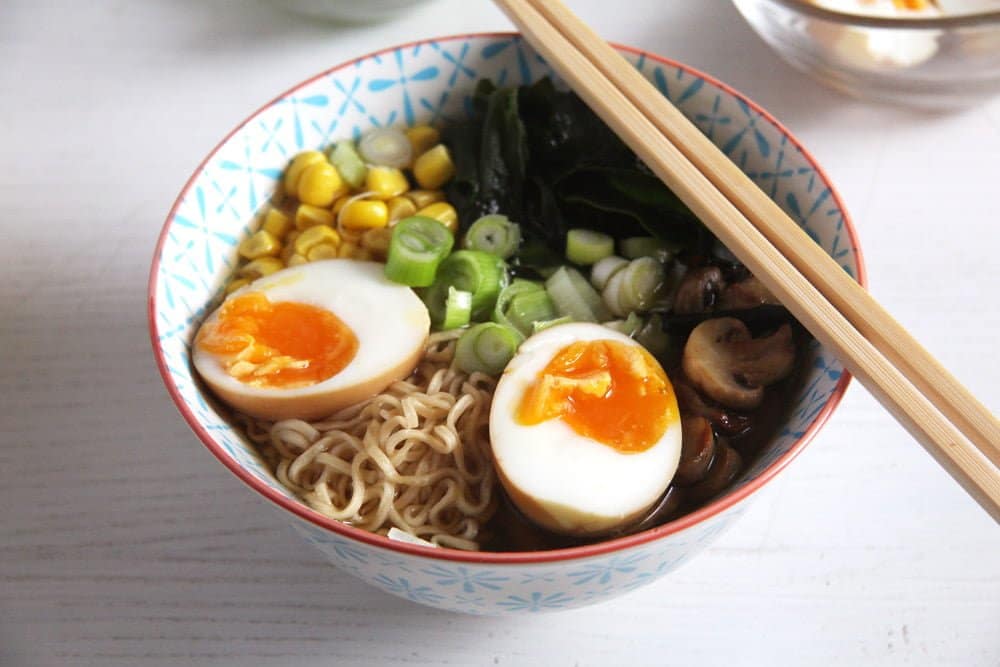
Learn how to make dashi broth for ramen soup with soy sauce eggs is the last post from the Stocks and Broths series.
Dashi is the Japanese stock resulting from cooking kombu, edible kelp or seaweeds, and katsuobushi, or bonito flakes, preserved, fermented tuna flakes.
Dashi is the basic stock used in Japanese cooking, the base for a large variety of Japanese soups, including miso soup or udon noodle soup.
I used the first batch I made to make an absolutely delicious ramen soup with soy sauce, eggs, and other toppings, like scallions, corn kernels, fried mushrooms, and wakame.
Jump to recipe
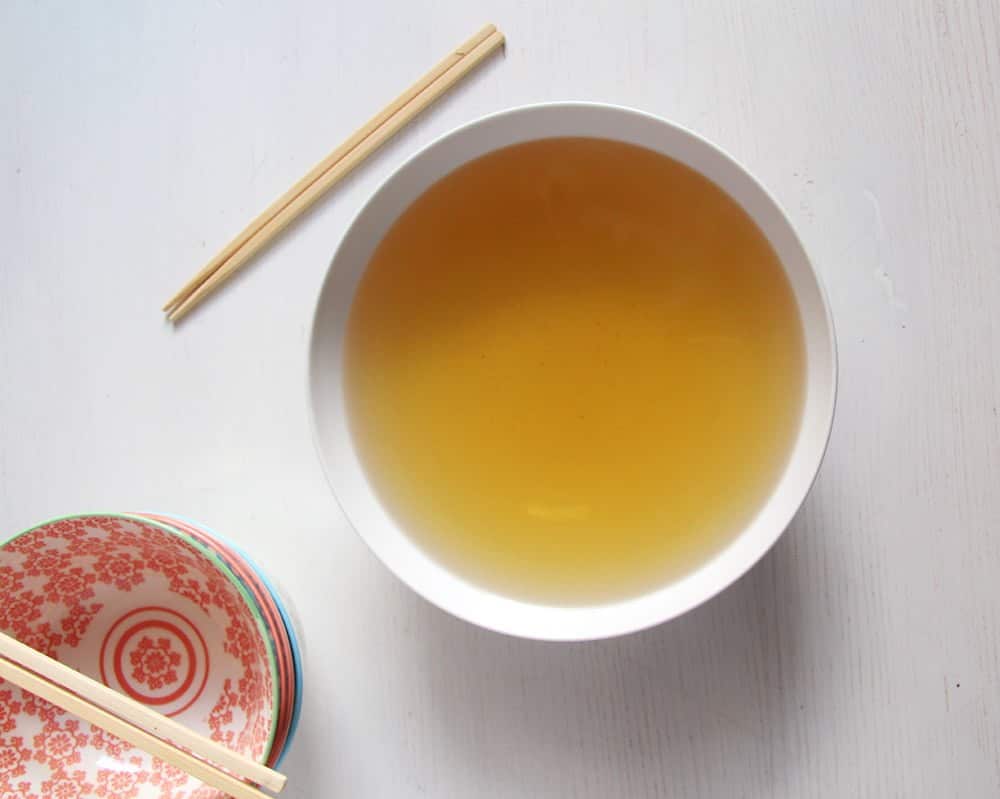
How to make it?
- Step #1: Clean the kombu using a damp cloth to wipe the seaweeds without removing the white powdery coating and soak it for at least 30 minutes and up to half a day.
- Step #2: Heat kombu. Take it off the heat just before it starts to boil, and remove the kombu. Save it for the second dashi.
- Step #3: Leave for 5 minutes, then add the dried bonito flakes. Bring to a boil again and simmer for 30 seconds. Turn off the heat and leave it for about 10 minutes until the bonito flakes sink to the bottom.
- Step #4: Strain through a sieve lined with a paper towel. Squeeze the paper towel to release all the liquid. Keep the bonito flakes for the second dashi if you decide to make it.
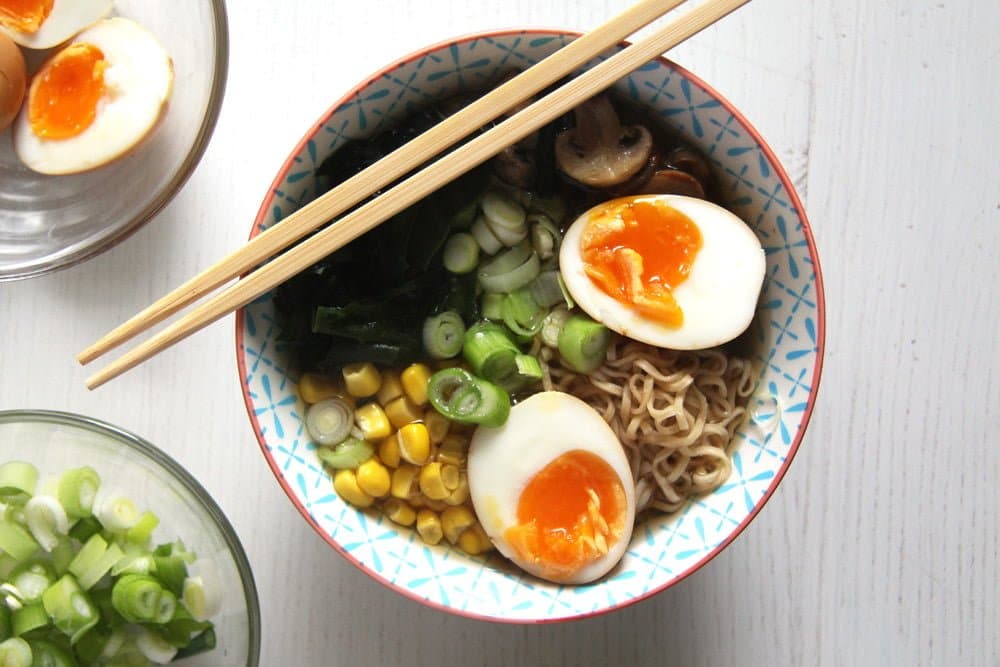
What to put in the ramen soup?
- Heat the dashi gently and stir in the mirin, sake, soy sauce, and salt to taste.
- Add sliced and golden-fried mushrooms.
- Cooked ramen noodles.
- Soaked wakame.
- Chopped vegetables like green onions/scallions and corn.
- Boiled eggs with a slightly runny yolk. Soy sauce eggs would be best, but regular boiled eggs are fine as well.
Soy sauce eggs:
- Boil the eggs.
- Place in a bowl of ice water and leave until cool enough to handle.
- In the meantime, mix soy sauce with warm water, sugar, and vinegar.
- Peel the eggs and place them in the marinade.
- Marinade for at least 2 hours and up to 6.
- Halve and serve with the ramen soup.
How to store dashi?
- Refrigerate in an airtight container for 3 to 7 days.
- Freeze for about 3 weeks.
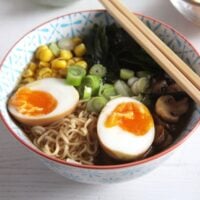
Dashi Broth for Ramen
How to make dashi broth for ramen soup with soy sauce eggs, noodles, and vegetables.
Print
Pin
Share
Grow
Rate
Servings: 1 liter/ 1 quart
Calories: 306kcal
Ingredients
Dashi:
- 0.7 oz kombu
- 4 cups water
- 1 oz katsuobushi/ dried bonito flakes
Soy sauce eggs:
- 6 eggs
- 1 tablespoon sugar
- 2 tablespoons sherry vinegar
- ¾ cups soy sauce
Ramen:
- 9 oz small mushrooms
- 1 tablespoon vegetable oil
- 5.5 oz ramen noodles
- very small handful dried wakame
- corn kernels canned or frozen
- 3 green onions
- 2 tablespoons mirin
- 2 tablespoons sake
- 3 tablespoons soy sauce or more to taste
- fine sea salt
Instructions
Dashi:
- Soak kombu: Clean the kombu using a damp cloth to wipe the seaweeds without removing the white powdery coating. Place in a pot and cover with the water. Leave to soak for at least 30 minutes and up to half a day.
- Heat kombu: Turn on the heat and almost bring it to a boil. Take it off the heat just before it starts to boil, and remove the kombu. Save it for the second dashi.
- Bonito flakes: Let the liquid stand for about 5 minutes then add the dried bonito flakes. Bring to a boil again, skimming occasionally, and simmer for just 30 seconds when it comes to a boil. Turn off the heat and leave it for about 10 minutes until the bonito flakes sink to the bottom.
- Strain: Line a sieve with a paper towel and strain the liquid. Squeeze the paper towel to release all the liquid. Keep the bonito flakes for the second dashi.
- Store: The dashi will keep for 3 to 7 days in the fridge and about 3 weeks when frozen.
Second dashi, optional for later use:
- Second dashi (optional): Place the cooked kombu and bonito flakes in a pot, cover with 1 liter/ 4 cups water, bring to a boil, and cook gently for 10 minutes. Leave it until the bonito flakes sink to the bottom of the pot and strain as shown before.
Soy sauce eggs:
- Whisk the warm water, sugar, vinegar, and soy sauce in a bowl large enough to hold the 6 eggs.
- Cook eggs: Bring a pot of water to a boil and cook the eggs for 6 minutes and 50 seconds. In the meantime, fill a bowl with ice cubes and cold water and place the eggs inside as soon as they are cooked. Leave for a few minutes, then peel.
- Marinate: Place the eggs in the marinade and marinate for 2 to 6 hours. Remove and place in an airtight container; they will keep it in the fridge for 1 month. You can reuse the marinade to make a second batch of eggs (they were so good, I made a second batch immediately).
Ramen soup:
- Heat the dashi gently and stir in the mirin, sake, soy sauce, and salt to taste.
- Cook mushrooms: Clean and slice the mushrooms and cook them in 1 tablespoon oil until golden brown.
- Cook the noodles according to the package's instructions. Soak the wakame in hot water according to the package's instructions. Chop the scallions and drain or defrost the corn kernels.
- Serve: Place some of these ingredients in each bowl, pour the soup over and top with the halved eggs. Serve immediately.
Nutrition
Serving: 1/4 of the ramen soup | Calories: 306kcal | Carbohydrates: 24g | Protein: 22g | Fat: 13g | Saturated Fat: 3g | Polyunsaturated Fat: 8g | Cholesterol: 290mg | Sodium: 4386mg | Fiber: 3g | Sugar: 10g
Tried this Recipe? Pin it for Later!Mention @adinabeck or tag #WhereIsMySpoon!

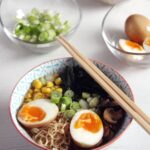
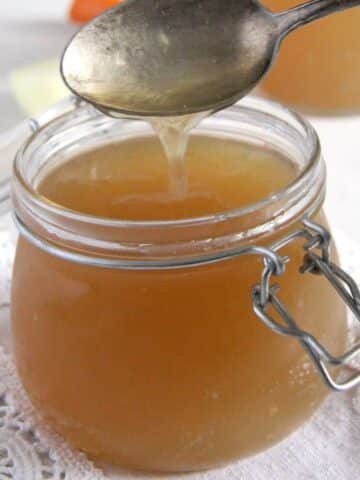
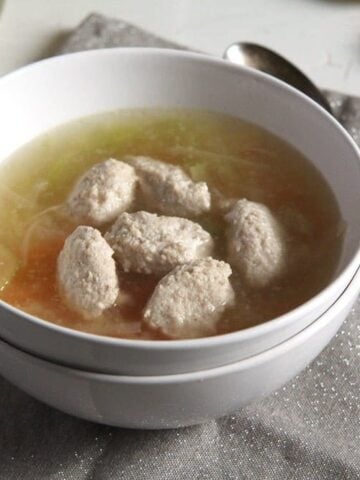
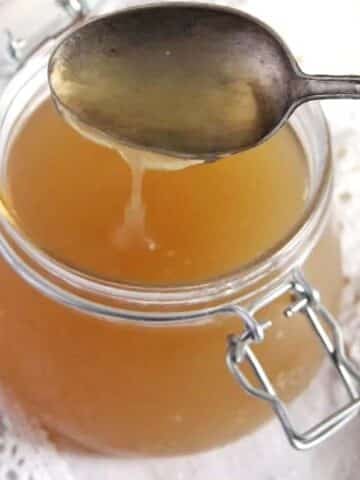
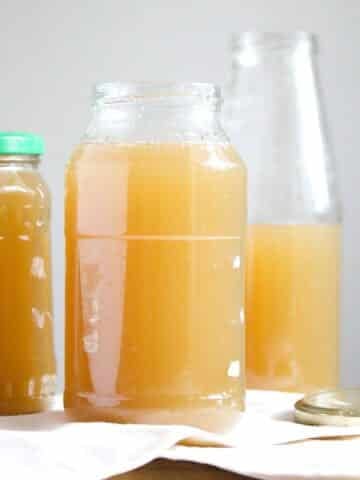





Jutta Holden says
Thank you so much for the detailed instructions, can't wait to make this!
Jutta
Adina says
Thank you, Nami, so nice of you to stop by. And thank you for your recipe and especially the very detailed instructions, they made everything so easy.
Nami | Just One Cookbook says
Hi Adina! Thank you so much for your kind mention. I'm so proud of you! You made dashi! Dashi is essential to Japanese cooking, and I'm so happy that you made it! The noodles look so delicious. Love your photography too! 🙂
Angie@cuisinestudy says
This is the base for miso soup and is what makes the soup so good! Thank you for the easy recipe!
Adina says
I am glad you like it, Angie. 🙂
Monica says
Adina - big kudos to you for making your own dashi and this delectable bowl of homemade ramen! I love Nami at Just One Cookbook and you did her proud. This sounds wonderful and looks amazing. Thank you for the shout-out, too. I'm so happy you saw those soy sauce eggs and made them. All the better that you liked them as much as we did! This is sensational...way to go!!
Adina says
Thank you, Monica, for the eggs recipe, we love them!